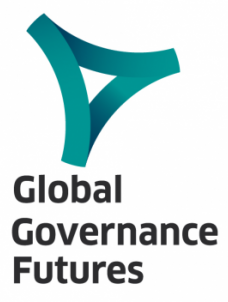Green Inclusive Finance – Where Have We Gone So Far? – A Conversation with GGF 2035 Fellow Sheila Teta Carina

This interview was conducted by the Global Governance Futures – Robert Bosch Foundation Multilateral Dialogues, which brings together young professionals to look ahead 10 years and recommend ways to address global challenges.
- What is financial inclusion and why does it matter for climate change?
Financial inclusion is a way to improve how individuals and businesses can access financial products and services to support their needs. It boosts the resilience of individuals and businesses to certain monetary shocks and helps to sustain climate-resilient societies. As climate change continues to threaten people globally, the effect of climate-related disasters are most severe in low-income communities that have no access to financial services. In East Nusa Tenggara, one of the provinces in Indonesia, cashew farmers who do not have access to financial services have experienced only one successful harvest since 2010 due to severe drought and flooding. This problem is increasing because they have no access to the monetary capital needed to build some adaptation measures, such as a rainwater harvesting system. In contrast, a study in Kenya showed that the productivity of dairy farmers increased when given the option to collateralized loans to install a rainwater harvesting system.
 Financial inclusion should be used together with strategies to promote community-based resilience in the face of climate change. Unfortunately, global green financing mechanisms like the Green Climate Fund have mostly financed large-scale ventures such as geothermal projects, and have many criteria that small communities are not able to achieve. On the regulatory side, only the Central Bank of Bangladesh has made a direct link between financial inclusion and climate change in their First Strategic Plan. As many countries around the world are committing to a Green New Deal, I think the first step necessary to turn plans into actions is to make an explicit commitment to inclusive green finance.
Financial inclusion should be used together with strategies to promote community-based resilience in the face of climate change. Unfortunately, global green financing mechanisms like the Green Climate Fund have mostly financed large-scale ventures such as geothermal projects, and have many criteria that small communities are not able to achieve. On the regulatory side, only the Central Bank of Bangladesh has made a direct link between financial inclusion and climate change in their First Strategic Plan. As many countries around the world are committing to a Green New Deal, I think the first step necessary to turn plans into actions is to make an explicit commitment to inclusive green finance.
- The impacts of climate change – such as increased extreme weather events – present physical risk to assets, investments and companies, and risk leading to supply chain disruptions. At the same time, the global shift away from carbon-intensive energy sources and industrial processes presents transition risks to many companies, communities and workers. How can micro, small and medium enterprises account for and measure these risks in order to survive the transition?
We are far away from calculating both physical and transition risks of climate change in micro, small, and medium enterprises (MSMEs), mainly due to a lack of data concerning these risks. As of now, there are several projects that are scattered around the world that have published or initiated any climate change assessment data on MSMEs. One example is the study on climate change risk assessment in textile and manufacturing in India. Although many financial service providers around the world are either voluntarily or obligated by their country to conduct sustainability assessment and reporting (ESG), this assessment is usually being done for larger enterprises. Getting MSMEs carbon footprint data from the Global Reporting Initiative Database would not be significant due to the fact that SMEs only constitute around 12 percent of the database. To exacerbate matters further, since companies only report ESG issues that are deemed ‘material’, most of the SMEs in the GRI’s repository negate carbon footprint in their sustainability reporting.
It will be difficult to make a financial model that is catered to SME's demands if we do not have the necessary data. A model currently under develop for MSMEs as a climate change adaptation measure is microinsurance for disaster risk management. However, insurers still have trouble in deciding the price of unknown climate risks. It is important for us to compile data firsthand in order to understand both the physical and transition risks of climate change to MSMEs, as well as their ability to mitigate and adapt to climate change. This data could be collected by enacting government regulations that require SMEs to report their carbon emissions, or by requiring large companies to report their Scope 3 emissions (indirect emissions from their supply chain) based on the Greenhouse Gas Protocol framework.
- Worldwide, many industries depend on natural capital, renewable and non-renewable natural assets (e.g., air, water, minerals, plants, animal, and soil) and natural services (e.g., water filtration, erosion control and climate regulation) that businesses and private corporations use for free. These are economically “invisible” because benefits they provides are not priced. What are some promising policy solutions to put a value on nature, so to speak, and asses the “true costs” of industrial resource usage (e.g., water pricing systems)?
There are at least 25 valuation methods under the total economic value (TEV) to calculate both the use and non-use value of ecosystem services. However, there are three approaches most commonly used in the valuation of ecosystem services: direct market valuation, revealed preference methods and stated preference method. Today’s most popular method of valuing natural capital globally is the direct market evaluation approach, which is determined by multiplying the quantity of the natural resource used with its market price. Since most ecosystem services do not have any market price, most valuation methodologies involve assessing how much people are willing to pay for a certain service. Therefore, it is important to bear in mind that the valuation process of ecosystem services process is very much context-based. For instance, a paper published by the European Commission in 2018 showed that the stated preference model is commonly used to value water quality, while revealed preference method is most common in valuing ecosystem services that provide cultural value.
I think the Economics of Ecosystem and Biodiversity (TEEB), which categorizes ecosystems into different types of services based on the benefit that each ecosystem provides, is a promising framework that can act as an anchor for policymaking. The TEEB framework uses the valuation methods mentioned above and collects and synthesizes the knowledge about different valuation methods used for various projects in many countries. Although the framework works well as an inventory of natural capital, most of the methods used to value ecosystem services regard ecosystem services within the context of 'production'. The consequence is that the methods do not capture the entire nuance in payment for ecosystem projects, and do not included certain variables such as future uncertainty, social unrest caused by transitioning, and potential disruptions to the economy. In addition, the method chosen for economic valuation also tends to be very subjective. For example, the method for calculating the social cost of carbon – used as the reference price for carbon sequestration as a service – is different between the US and the EU. The EU uses marginal cost of abatement in its method, whereas the US uses the integrated assessment model to calculate the social costs of carbon. For now, I think that the existing valuation method is sufficient to get an approximate cost/value of nature since it is aligned with the best available scientific principle. That said, the model could be further enhanced.
- What role can small and large-scale businesses play in mainstreaming and implementing the Agenda 2030 and its sustainable development goals?
Since the private sector accounts for around 60 percent of GDP in most countries, companies play a key role in delivering Sustainable Development Goals (SDGs) and global development goals. Firstly, the private sector contributes to 90 percent of jobs that directly related to SDGs number 1 and 8. Secondly, compared to MDGs, SDGs hold a paradigm whereby global development cannot depend solely on official development assistance (ODA) to cover financing needs amounting to trillions of dollars every year to achieve the SDGs. Lastly, the private sector is a driver of innovation that can encourage the development of the green economy.
Indonesia has one of the best practices for private sector involvement in SDGs. In Indonesia, government, civil society organizations and private companies voluntarily report their contribution for related SDGs in both national and local action plans. This is interesting, from my perspective, since the mapping process matching indicators and SDG targets with the private sector’s program opens up an opportunity for multi-stakeholder partnerships between private companies and other stakeholders who have the same program. This also creates opportunities for new financing models, such as blended financing, which may be able to accelerate the achievement of several SDG targets. One example of a successfully blended financing scheme in Indonesia is the Corporate Sustainability Bond for Natural Rubber Production, formed by United Nations Environment Program (UNEP), ADM Capital, BNP Paribas, and the World Agroforesty Center. Indonesia itself is currently the largest hubs for blended financing transactions in Southeast Asia, which make up around 40 percent of regional transactions alone.
Sheila Teta Carina is an analyst in Microsave Consulting in Indonesia. She is a fellow of the Global Governance Futures – Robert Bosch Foundation Multilateral Dialogues program (GGF 2035). The views expressed in this interview are her own and do not represent her official position.


